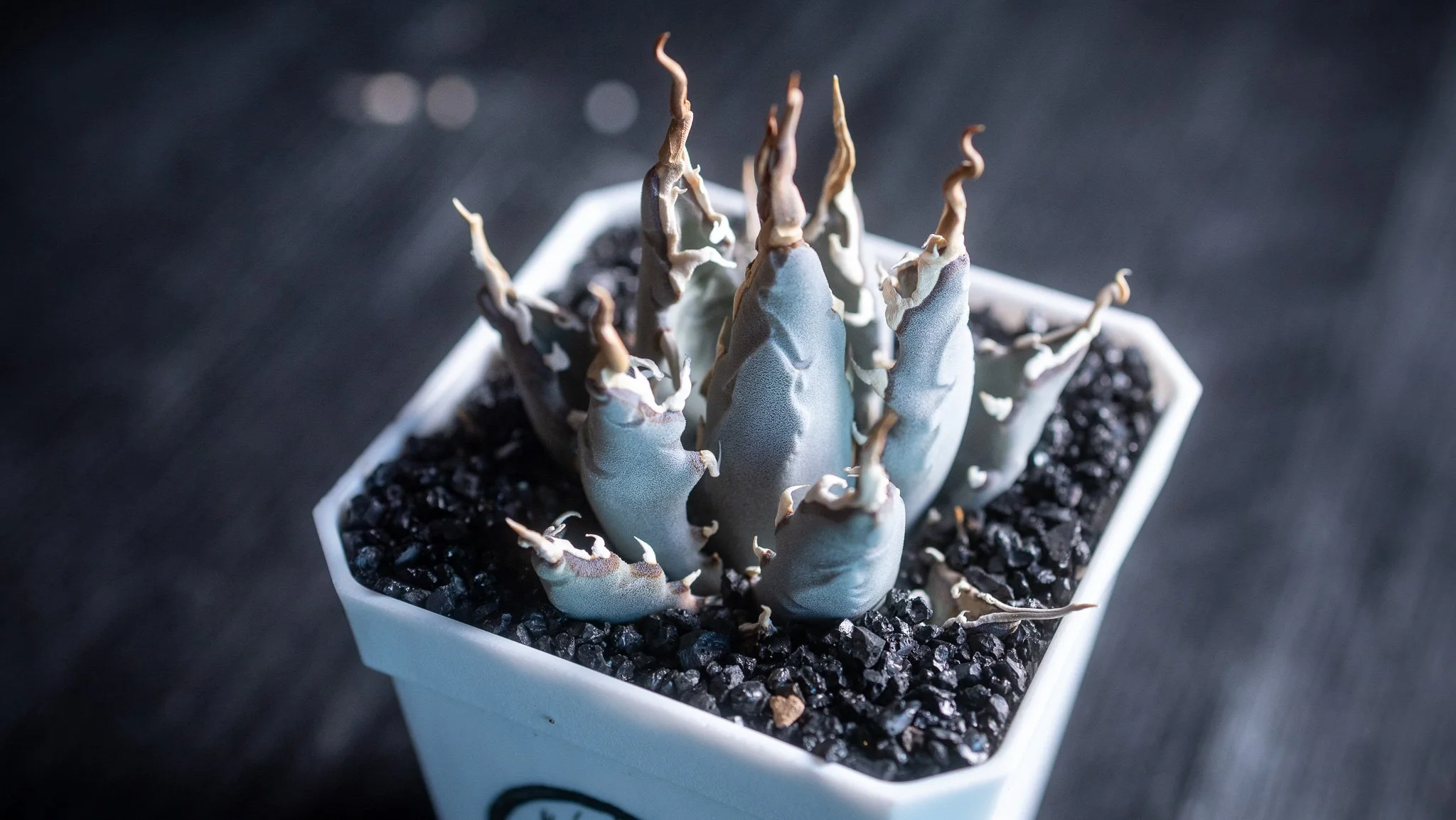Agave Utahensis: Read this before purchasing
Every week, on Thursday, I release a limited number of ethically and sustainably seed-grown Agave utahensis (including subspecies nevadensis, eborispina, and kaibabensis) plants for sale. For access to these drops, sign up to the mailing list.
An agave utahensis subspecies eborispina with rare merged spines.
Many online sellers lie about Agave utahensis subspecies.
Agave utahensis subspecies eborispina, with its elaborately long spines, is highly valued in the collectors’ market and commands higher prices than the other varieties. Many online sellers are misleading and labeling “regular degular” Agave utahensis as eborispina. I recorded a YouTube video about this practice.
Only seed-grown Agave utahensis are ethical and sustainable.
Agave utahensis is under threat from illegal poaching, and legal, but unethical and unsustainable, wild collection. The current legal situation means that there is little to no transparency for consumers to understand exactly where wild plants are from. If you’re interested in purchasing ethically sourced Agave utahensis, the only reliable option is to buy seed-grown plants. Luckily, there are a few ways to distinguish seed-grown from wild-collected Agave utahensis, and I explain them in this YouTube video.
Agave utahensis is the most cold-hardy species of Agave.
Agave utahensis regularly withstands subzero temperatures and snow in its natural habitat, where it can be found at elevations as high as 6,500 feet and above. Research published by the US Department of Energy indicates that agave utahensis is the “agave species with the highest frost tolerance” and that it is hardy down to -23c/-9f. This makes it suitable for colder climates compared to most agaves. You can read more about Agave utahensis’s cold-hardiness here.
Agave utahensis only flowers once in its life, and then dies.
Like all agaves, Agave utahensis is monocarpic, meaning it flowers once and then dies. I think this makes A. utahensis a really romantic plant. Generally, before it flowers and dies, an agave utahensis plant will have reproduced vegetatively, by producing baby plants, called pups or offsets, around its base. So don’t worry about losing your prized utahensis plant, by the time it’s mature, it’ll have given you lots more to love.
Agave utahensis grows very slowly.
But if you get a young A. utahensis, it’ll be a while before it flowers and dies. This species grows very slowly, often taking 15-20 years or more to reach maturity and flower. Patience is essential for collectors of this plant. If you water and fertilize it ideally (which generally means more than other succulents, and definitely more than cactus species), it will grow faster than if you “hard grow” it with minimal water. But it’ll never be a “fast growing” plant.
A two year old, seed-grown Agave utahensis subspecies nevadensis.
Agave utahensis is a very compact (read: small) agave species.
Agave utahensis subspecies eborispina, nevadensis, and utahensis stay relatively small, typically reaching 12-18 inches in diameter, making them suitable for container growing or small garden spaces. Only the subspecies Agave utahensis subspecies kaibabensis grows larger. This is one of the reasons that most Agave uthahensis subspecies make really great house plants. In fact, they’re one of the only agave species that can reasonably grow their entire life in a container, indoors.
Agave utahensis needs well-draining soil.
A. utahensis needs well-draining soil. Unless you live in a very dry climate, use a gritty, mineral-based mix with at least 50% pumice, turface, perlite, or other inorganic material. And even if you do live in the desert, a low organic material soil mix is best. My free Agave utahensis care guide details ideal soil mixes. Download it here.
Agave utahensis loves full sun but not too much heat.
This agave thrives in full sun and actually prefers intense light. Insufficient light will cause Agave utahensis to grow less compact rosettes with longer, thinner leaves with a green coloration (rather than the glaucous blue/gray color most collectors cherish). But remember, these plants grow up in the mountains, where temperatures are lower, young agave utahensis plants will burn if exposed to high heat and direct sun before they’re properly acclimated to it. I also cover this in my Agave utahensis care guide.
How to water Agave utahensis correctly.
Native to the Mojave Desert, Agave utahensis can tolerate drought conditions. But if you’re using a well-draining soil and making sure it dries out fully between waterings, more frequent irrigation will lead to faster growth rates. And you guessed it: my plant care guide also covers this.

